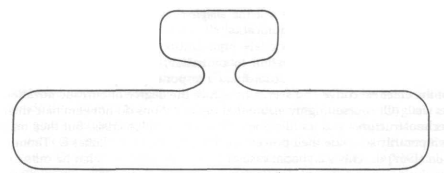The Simple Structure is characterized, above all, by what is not—elabo- rated. Typically, it has little or no technostructure, few support staffers, a loose division of labor, minimal differentiation among its units, and a small managerial hierarchy. Little of its behavior is formalized, and it makes minimal use of planning, training, and the liaison devices. It is, above all, organic. In a sense, Simple Structure is nonstructure: it avoids using all the formal devices of structure, and it minimizes its dependence on staff specialists. The latter are typically hired on contract when needed, rather than encompassed permanently within the organization.
Coordination in the Simple Structure is effected largely by direct supervision. Specifically, power over all important decisions tends to be centralized in the hands of the chief executive officer. Thus, the strategic apex emerges as the key part of the structure; indeed, the structure often consists of little more than a one-person strategic apex and an organic operating core. The chief executive tends to have a wide span of control; in fact, it is not uncommon for everyone else to report to him. Grouping into units—if it exists at all—more often than not is on a loose functional basis, with the coordination between units left to the chief executive. Likewise, communication flows informally in this structure, most of it between the chief executive and everyone else. Thus, a group of McGill MBA students commented in their study of a small manufacturer of pumps, “It is not unusual to see the president of the company engaged in casual conversa- tion with a machine shop mechanic. These types of specialties enable the president to be informed of a machine breakdown even before the shop superintendent is advised.”1 The work flow too tends to be flexible, with the jobs of the operating core being relatively unspecialized and inter- changeable.
Decision making is likewise flexible, with the centralization of power allowing for rapid response. Strategy formulation is, of course, the sole responsibility of the chief executive. The process tends to be highly intui- tive and nonanalytical, often thriving on uncertainty and oriented to the aggressive search for opportunities. It is not surprising, therefore, that the resulting strategy—seldom made explicit—reflects the chief executive’s im- plicit vision of the place of the organization in its environment. In fact, that strategy is often a direct extrapolation of his personal beliefs, an extension of his own personality.
Handling disturbances and innovating in an entrepreneurial way are perhaps the most important aspects of the chief executive’s work. But considerable attention is also given to leadership—a reflection of the im- portance of direct supervision—and to monitoring for information to keep himself well informed. In contrast, the more formal aspects of managerial work—figurehead duties, for example—are of less significance, as are the need to disseminate information and allocate resources internally, since power and information remain in the strategic apex of the Simple Structure.

Figure 8-1. The Simple Structure
Figure 8-1 shows the Simple Structure symbolically, in terms of our logo, with a wide span of control at the strategic apex, no staff units, and an insignificant middle line.
Source: Mintzberg Henry (1992), Structure in Fives: Designing Effective Organizations, Pearson; 1st edition.
